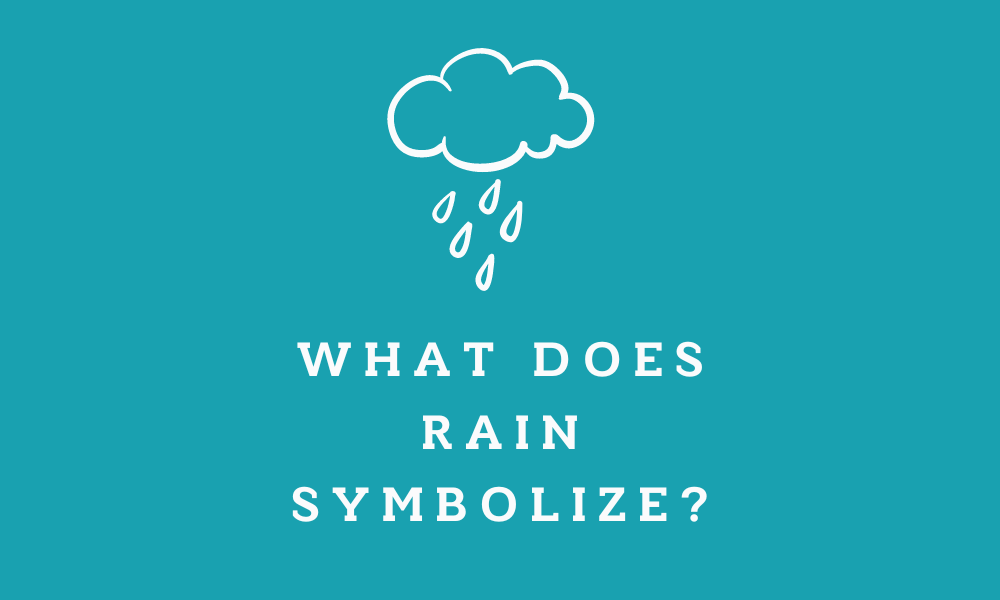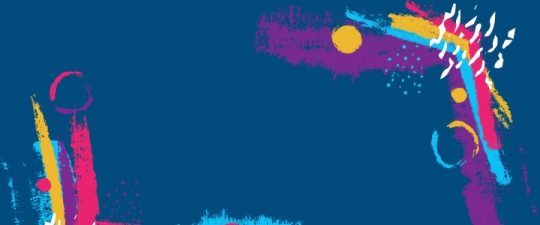Literature is one of the fields of art with a rich mix of symbols. Through history, different authors have been using symbols in their literary works. Anyone who is a fan of literature will not fail to notice the symbols. It could be a different story for those who are not so conversant with the field. The main aim for using symbols that is apparent in many works of literature is for writers to attract the attention of those who enjoy reading their works.
Poets, for instance, usually have a primary meaning in their works. It could be anything from personal experiences to other things affecting humanity. Symbolism helps them bring out a secondary meaning to what they want to express. Apart from this, symbols fill in the blank spaces. Where one could not understand something normally, they would interpret using the symbols.
Using symbols can however be challenging both to the writer and the reader. Sometimes they need careful analysis. But there are some that are quite obvious and one can see them from a distance. Water is one of the symbols used a lot in literature. It can appear in many forms, but it is still water. Authors often use words such as waterfalls, lakes, rivers, streams or rain. And that is why understanding water as a symbol in literature takes many different forms.
There are some obvious meanings of water in life. Even in the streets, it is known that water represents life, being born, purity, cleansing or in spiritual matters – washing away sins. In life, water comes as a very vital requirement. Often, people refer to water as life or a source of life. It is associated with life and growth regarding birth and rebirth. Christians use water for baptisms to symbolize spiritual death and resurrection. In other words, it is a clear symbol for spiritual births. And in literature, life is formed when rain appears; it suggests a spiritual birth as well.
In the modern wasteland, April is considered the cruelest month for citizens in these areas. It represents a rebirth, and that is why they like winter or spiritual death. This is because a rebirth also carries the meaning of their efforts on their part – any spiritual effort is not taken well — a new life to the landscape sprouts in spring. But that does not make things any better here for it only stirs square roots. That means the earth in wasteland will not produce anything then.
One writer, Eliot, uses a protagonist named Tiresias to reveal something interesting about the modern people. Tiresias is a fond traveler who has come from a German prince. His connection with relatives including family and community is completely cut. His life revolves majorly around the physical comforts life can offer. These are the ties that Eliot uses to explain culture, real life, spiritual as well as moral. He shows that the modern human is like this German prince. People today live in a physical place and are completely disconnected from religious and moral paths. Winter comes with a shower of rain overtaking their time in Munich. And even that comes to them blindly as they fail to realize the purifying power rain brings and instead run to find a hiding spot. To her, the purifying and fertilizing significance of rain is only but a nuisance.

The question what does rain symbolize can be looked at from different angles. Another great poet, Shelly brings out another different perspective or rain. In her poem “Cloud,” rain originates from the cloud before regenerating in the soil. Cloud becomes this gardener who quenches the thirst of beautiful flowers though rains as the birds enjoy dewy mornings on the buds. It becomes a symbol of a good harvest. In this work, rain is the center of life and existence, the opposite of what we see in Elliot’s work where people look to the other side, ignoring how a powerful fertilizer rain is. All they do is run helter-skelter looking for shelter when the sweet drops of rain start descending.
The spiritual barrenness and death of modern civilization is a clear sign in the lines of Tiresias. The panorama of modern civilization appears only as a shell of stones; dead trees, dry stones than lacking the sound of water. In all, spiritual desolation has descended upon humanity. From another great writer Milton, Eve showed her surprises when she learned her roots represented in her book, “4 Paradise Lost”. Her relation to Adam is rekindled as her image appears into the lake. She is traveling on a path to self-discovery. Her voice tells her that she has mothered the human race. As recognition is achieved looking in the water, it symbolizes how Eve grew a consciousness about her existence. It is the symbol of awareness of being born. Two things are apparent from the stories above. One side is Tiresias who surveys and finds nothingness. On the other hand, is Eve who realizes her image into the water leading to self-discovery.
The Egyptians were the first to use the Tarot Pack of 78 cards to predict the rise of water in the river Nile which symbolized the return of fertility. That is the complete opposite of what we see today. The cards are being used merely for fortune telling which 100% fake and illegal as well. A story of Madame Sosostris telling fortunes to a client who is possibly a protagonist is clear evidence of this fakery. The fertility god is symbolized by the Phoenician sailor who drowned. The effigy of the god was thrown in the river to symbolize summer’s death. The story of the drowned Phoenician can be related to the English myth of King Fisher. His wound brings infertility to the land. This case may represent a curse that hit Europe in the 20th century.
“Be afraid of dying by water” is a warning that tells people to avoid dying in the same manner as the Phoenician traveler.
It also reveals the truth about the tricks used by fortune tellers of the modern world. And that is not all; the warning reminds people that there are other ways of dying by water, which refers to the spiritual dryness over the wasteland. William Wordsmith’s poetry reveals another dimension of water symbolism in literature. In particular, his poem “The Prelude,” talks of a lake, which is another way of talking about water. He remembers his younger years as a boy where freedom and entrapment are combined. He was then a curious boy who borrowed a boat from a shepherd at night for a ride. An image of a cliff appears in his mind as he rows deep into the lake. The rise of this cliff sends shivers down his spine. The lake is seen as shining clear among the mountains which now has awakened the curiosity of a young boy.
The welcoming and serene nature of the lake is temptingly hard to resist. Wordsmith can no longer withstand the desire, and he takes out a boat to ride. But the supernatural event he witnesses in the deep in the waters changes his perspective of the once safe waters to fearful and wretched. He was out for a pleasurable adventure that turned to be a panic-stricken ride as he struggled to make it back. A change has been troubled in his chest even as the lake remains quiet and peaceful. Here, both freedom and entrapment are clearly outlined. Wordsmith is too young to row first enough to escape lake he once perceived peaceful and beautiful.
We find two poems here talking about the horrid experiences water can bring. One is a warning to fear death by water while the other starts with a calmness that begs to be rowed on by Wordsmith only to end up in a frightening lake expedition.
In another case, a lady comes to the lover and seeks to know where or not he knows, sees or remembers anything. The lover replies that he remembers one line. This line is a quotation from the ‘The Tempest” by William Shakespeare. “Those are peals, that were his eyes.” The line came mechanically and had no significance spiritually nor gives any idea of man’s transformation through a higher power. The context of the line, however, is about someone who has stayed under water for long after drowning. With his eyes turned into pearls, it is a reminder to avoid death resulting from water. The souls of people in the modern world have turned hard and lifeless as the eyes.
In Elliot, 134-13 is a clear presentation of how dull and meaningless life is in the wasteland. It talks here about hot water at ten and waiting for the rain as people place chess with lidless eyes… Their routine was to sit around waiting for something to happen, anticipating for something exciting.
John Donne creates another piece with a sad lover who has to leave his soul mate. In this poetry work “A valediction; of weeping’, Doone uses a tear to represent water. He refuses to embrace her at the start of the poem – instead, manages with a reflection of his beloved as tears roll down from his eyes. Even though they are separated, they are still tied together. The tears of his beloved become his fruit and emblem for he has to endure his present predicament and his grief when he is finally away. He continues to state how his tears will fall with his reflection as the both become nothing. The tears will continue to fall as she vanished and he will continue on a voyage in the water. Their tears are generative and decay without end.
The moment people start crying, the eyes are filled with tears, and it becomes impossible to see each other. In the wasteland, people are waiting to for something that can stir up their dull lives whereas Donne’s poetry is of departure rather than anticipation. In his work, “if it rains” is a symbol of hope and spiritual rebirth. The fading reflection appearing in his tears stand for losing spirituality.
As autumn continues, we see Tiresias surveying the Thames scene, from ‘The Fire Sermon’ part. The trees are without leaves, giving a smooth flow for the wind without a sound. The summer held a haunt of nameless ladies looking for temporary excitement. The sons of rich people from the business industry also there in search of pleasurable moments. The all leave after getting a dose of what they came for. The river suffers the consequences of their action, as the empty bottles, cigarette cases, papers among other items are left on its banks – a reminder of the event.
Sadness engulfs the mood as the protagonist falls into the morning for the river. It is the pollution that brings him to his knees. Here, we find another answer to what does rain symbolize in literature as the man sits on the banks of the river in a gas house. A cold breeze hits him bringing the echoes of senseless laughter of crowds in London. He thinks of how they move about like dried bones. The memories of Bonnivard in prison of Chillon from one of Byron’s famous poems flood his mind. There is no freedom, which compels the man to lament while resting on the banks of Lake Leman; the same as Jews sitting by and weeping by the river Babylon – in the bible. This is the spokesperson of humanity who has seen it all. He even remembers the brother of King Fisher, and Ferdinand after the death of the king.
The true meaning of rain symbolism can also be found in the past experiences where water and fishing were all about regeneration. It was about a change in society. Today, however, these two critical things have lost their spiritual symbolism. Another scene comes up from the poet: fishing near the river, in which he tried to fish in a canal situated at the back of the gas of the house. He does not find any fish but an ugly rat. Again, he recalls a story of Ferdinand. The brother to the kind exiled him for wanted to grab the throne. The real king, in this case, is like the fish whereas the other is like the rat. The scene on the modern river banks is not something to be proud of. The building of the bank is filled with while naked bodies, but the rats on the bank create an endless disturbance.
Compare to the roads along the bank that are filled with vehicles all making noise as a signal for Mrs. Porter who intends to meet Sweeney, her lover. The moonlight reflects the face of Mrs. Porter as her daughter walks beside her. Instead of washing their feet in the river, they use soda water. This is because they want to make their skins much lighter to pull males. This is the exact representation of today’s wasteland infested with degeneracy.
D.H Lawrence speaks of water as an essential commodity for human existence. Nobody can think of life without water. Even in the modern world, everyone wants to preserve water. Read the news, and you will not fail to find people being encouraged to take care of water resources. But this is the opposite of what is taking place on the wasteland where they are wasting water – using it to make their skin softer. Purification has now become a think of the past.
DH Laurence continues to show us the symbolism of rain in the literature using his poetry. In one of line, he states, “A snake came to my water-trough on a hot, hot day, I in pajamas for heat, to drink there.” The writer, at the beginning of this poem, uses water drinking liquid. Then a snake comes into the water. And water transforms into poison when it gets into the mouth of a snake. The poets wish to drink the water, but he has to deal with the yellow, brown soft-bellied snake in the trough. The snake is drinking the water without any hurry. The snake looks at the poet as it flickers its two-forked tongue before continue to sip a bit more.
Tiresias continues on a journey along Queen Victoria Street. This time, he is accompanied by the sound of music in his ears, and he finally gets to the lower end of Thames Street, where the poor live. He is hit by the sweet music of a mandolin originating from a tavern. The chanter of fishermen and sailors resting on the tavern attracts his attention even more. He beholds St. Magus Martyr church, whose interior Eliot had praised a lot. The sight of the poor is now clearly corrupted by sexual perversion and sit, contrary to what the songs of the three Thames daughters brought out. The poor girls living on the banks of the river start together as a team before separating. Their tears flow for the polluting of the river with oil and tar. River Thames sweating with oil and tar is a symbol of the commercial pollution of the rivers we see today.
Another poet, Mathew Arnold offers his contribution to the use of rain in literature. He has an obsession with water as it is apparent in his poem, “Dover Beach.” Every part of the poem has regularly mentioned water as full of mystery, sadness, and tears. From the beginning of the piece, he cites the calmness of the sea, with a full tide. He continues to talk about the straits of Dover looking bright in under the moon. The visualization of the cliffs looming in the bay and the sand, seemingly white from the moonlight reflection is achieved. The poet then calls his lover to witness how the waves come and go. But there is a twist as the poet brings sadness in this seemingly calm part when he refers to the sad interpretation of the waves by the Greek dramatist Sophocles. Sophocles remembers the tragedy of human life when he hears the sound of the waves.
The poet continues to refer to the ancient times when the sea of religious faith was overflowing. This has since been overwhelmed by doubt and disbelief dropping the world into a state of barrenness and cheerlessness. To him, people have become skeptical as religion has lost its grip on the mind of humanity. The world is barren, and people are living in darkness, with ignorance and aimless struggles block their eyes. Dover Beach the poem is filled with the sea, showing different places in varying forms. One can feel the power of this imagery in the whole poem.
struggle as possible.
The part under ‘Death by water’ brings out the symbol clearly in the title. Here we find a more profound use of water imagery in literature where water was traditionally used for purification and to regenerate. In today’s society of desolation, water is a source of destruction. The truth is, it is not water that has lost its function; it is the man who has become less of human and more of a beast. The human emotion in him has been subdued by the desire for wealth and temporary pleasures. The same case is represented in “The River’ poetry of A.K Ramanujan. In this work, he is representing water in the form of a flood that kills the villagers, including one pregnant woman. His concern comes as a result of the damages a flood brings to the people year after year.
Referring to the Phoenician Traveler, we again find Phlebas, a young, tall and fair lad who’s wasted his life in the water. His life was all on business activities and pleasure. He had no spiritual motivation in the whole of his life. Phlebas was trapped in a whirlpool as he tried to pass the various stages of his age. The ritual immersion of the likeness of the god of vegetation, Orisis is the reference point for the same activity. Orisis was supposed to pass the different stages of life in reverse. He goes into the water when he is old; he rises young and falls on the waves to become a boy, before being reborn. In the case of the Phoenician, rebirth is not possible because modern humanity has too much moral degradation. The only medicine is to receive guidance from the moral and spiritual aspects of life. The contemporary society is fully secularized, rejecting the supernal, hence dictating its moral decay and disintegration.
A.K Ramanujan is a contemporary Indian poet who has written about the influence of symbols in the Indian literature. Through his work ‘A River’ he discusses the havoc spread by flood using a river symbol. The water here is a force of disaster and destruction. The poets living in Madurai, a city of temples write about how rivers flow through the city every summer. The river flows first as a narrow stream that later flood with rainwater. The water cannot pass through the water gates because of too many obstructions from piles of straw and women hair. The bridges will need repairs afterward with the hard stones restoring their dull colors.
The poets here are merely talking about flooding rivers. Once, a stranger spent a night here during such a time and heard how people complained about rising water levels. They talked about how water flooded bath places and how it swept away three villages, and other things nearly every year. The villager in Madurai could not do anything just like a sailor cannot sometimes save himself from drowning. Here, both poets are using rain symbolism in literature to show the destructive side of the water.
The ending part of what the thunder said, “here, no water, but only rock” refers to the pilgrimage of Sir Percival or Parsifal, the quester. He embarked on a journey to king fisher looking for the Holy Grail. The lost grail is in a dangerous chapel on top of a mountain which the knight and his followers manage to get to. Again, the rain symbol is applied here. The place is arid since there has been no rain for a long time leaving the land barren and desolated. As this scenery greats their eyes, they discover there no water, and the rock is even cracked. The old man is left with gaps in his mouth with no peace of mind as the annoying sound of the wind going through dried grass echoes the environment. The jarring of songs of desert insects and the sound of thunder without rain make the situation even worse. Hallucinations start as the treasure hunters continue up the hill. They start to see red ghostly figures that seem to be staring at them from mud houses while jeering them.
This is the same state of everyone who tries to search for truth and spiritual salvation. The spiritualism path is one challenging route and those who try it out often end up with hallucinations. The traveler continued to cry for water time and again, revealing how much pain and suffering they have to undergo. In the end, the poet ignores the dead land. He turns his back entirely away from the land to start fishing on the shore of the river while enjoying his time. Fishing in the river in the context shows the poet is trying to rediscover his spiritual regeneration. Rain appears in literature as both life-giving and disastrous depending on how the society perceives it. It is clear the modern world is disintegrated from its spirituality and morals, which makes water not useful.











